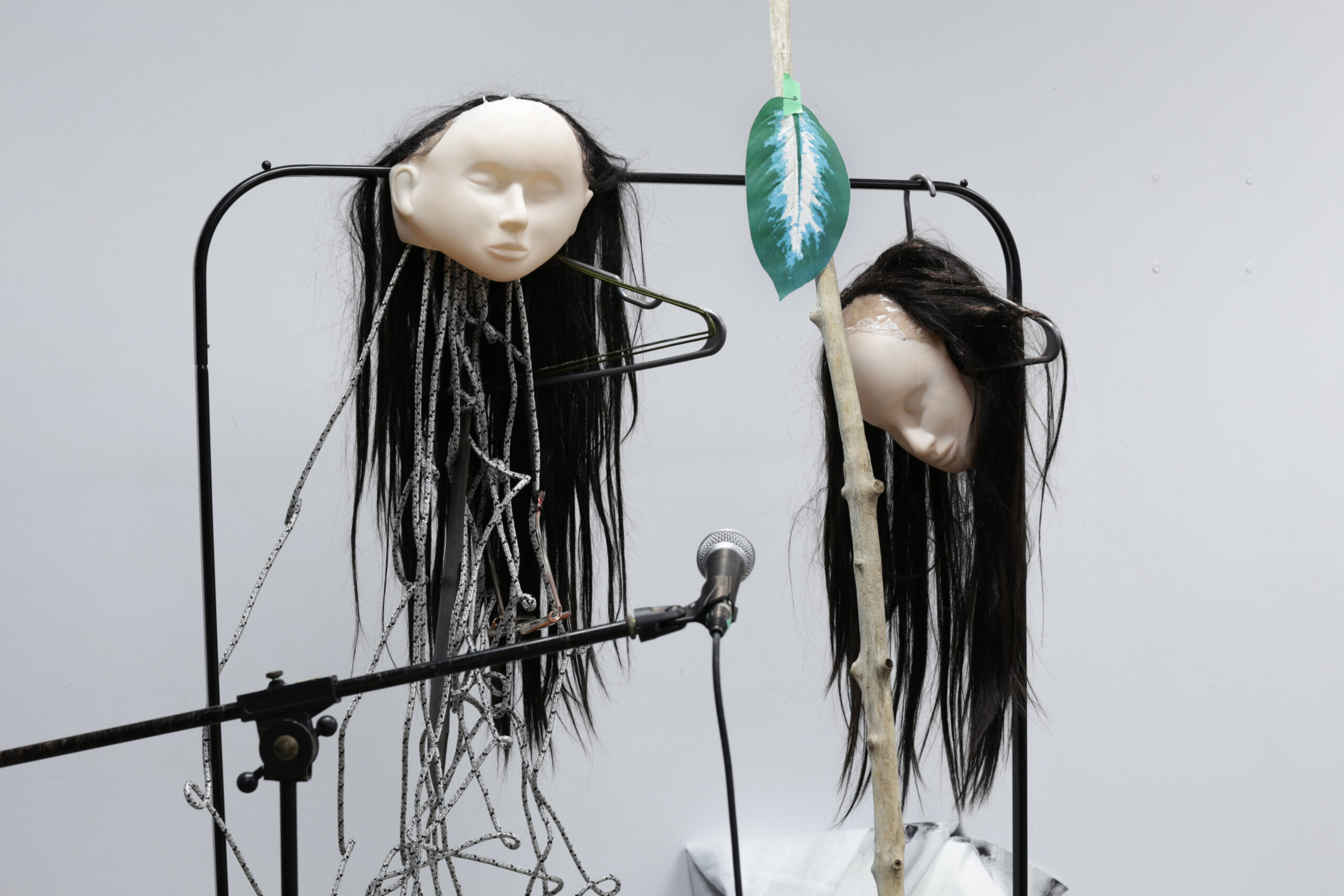Artistic duo Geneviève and Matthieu derive inspiration for their latest performance from investigative TV shows and movies
Artistic duo Geneviève et Matthieu will present their new creation titled M. Gros at La Chapelle Scènes Contemporaines theater from Oct. 12 to 15. The performers bring the audience into their universe in a non-narrative multidisciplinary creation built around the themes of investigation, identity, and the art world.
Some of the props Geneviève et Matthieu use in their new creation include fake skin placed on stools, masks with long dark hair attached to clothes hangers, a large piece of fabric piled at the back of the stage, a cotton candy machine, a guitar that plays by itself, a large rope, and a collection of knives.
Their piece is based around the idea of the Mr. Big police investigation technique. This technique aims to solve unsolved crimes through the work of undercover police officers who use infiltration techniques to get to know the suspect. The artists were inspired by investigative TV shows and movies they love. They also thought the name Mr. Big was poetic and could correlate to many ideas, such as the chocolate bar, the body, and the rock band of the same name.
Geneviève et Matthieu have been working on M. Gros for two years now, with it constantly evolving. Improvisation is a crucial part of the performance: the artists have a script that lists the main events of the show, but the way in which they transition from one to the other changes every time.
The artists view the improvisational aspect of their work as a challenge; one that allows them to constantly try new things. “We want the freedom we are giving ourselves to show through because that is all part of playing games, when you start a game of Clue you don’t know how it’s going to end, so it’s the same for us, it’s the idea of how it will end and what shape it will take,” said Geneviève.
The duo is also accompanied on stage by a mad curator who hates contemporary art, and a visual artist who hides behind the different objects on the stage. “It is a roleplay and there are many declensions, but always under the same theme of our identity, who we are, what we hide and what we reveal,” explained Geneviève.
M. Gros is an investigation game Geneviève et Matthieu set for themselves. They are using movement, music and text throughout the performance. As the investigators, their target is specific: they are taking over the art world. The idea came to them after pondering what would be the worst thing that artists could lose. The answer to this question was their ideas. Therefore, the performance also reflects on the contemporary art world.
Geneviève et Matthieu have been working as artists since the 1990s. They also founded an artist centre in their hometown of Rouyn-Noranda called l’Écart. The Biennale d’Art Performatif de Rouyn-Noranda performance art festival which presented its 9 edition in 2018, is another project they initiated. All the art pieces they’ve encountered influence their practice. Their knowledge enriches the show as they touch on the history of performance art.
Geneviève et Matthieu are both trained in visual arts. They are also musicians who wrote and produced five albums. The performative aspect of their work appeared later in their career, with their pieces La Jamésie and L’opéra d’or.
Geneviève explained that the creation of their performances was always driven by the props they use. Also, the multidisciplinary aspect of their work is an important part of their creative process. “We always present in different contexts whether it is a theatre, an art gallery, it is really something we are looking for because it gives us the opportunity to work differently and to be influenced by the context,” said Matthieu.
After its run at La Chapelle Scènes Contemporaines, M. Gros will be presented in another form at the Pierre-François Ouellette art contemporain gallery from Nov. 13 to Dec. 18. For them, the exhibition space gives the audience a way of interacting with the props that is different than in a performance space. “When we are in an exhibition space, we have another relationship with the artwork which includes more proximity… in the way we will install it, the work of art will have another life and the objects will interact with each other in a different way,” said Geneviève.
M. Gros is presented in partnership with the Phenomena Festival. Tickets for the M. Gros show are available on the La Chapelle Scènes Contemporaines website.
Photograph courtesy of Geneviève et Matthieu
